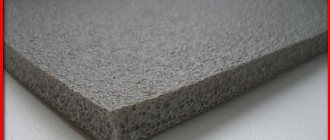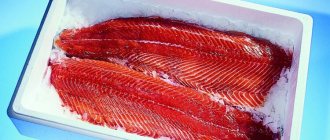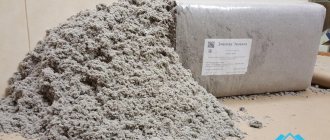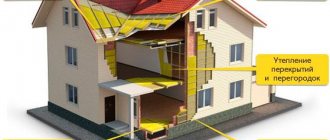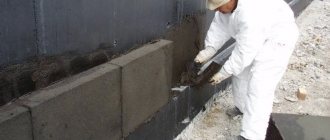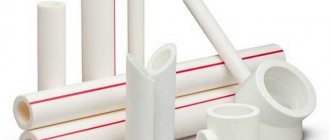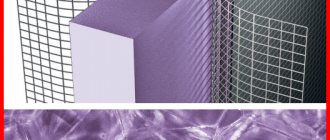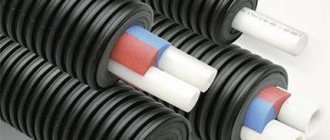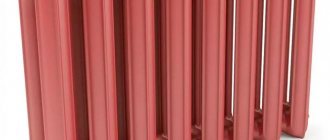Polyethylene foam is a group of elastic elastic materials with a closed porous structure, belonging to the class of gas-filled porous plastics.
Unlike most other polymers that have narrow-profile applications, polyethylene foam is universal.
The combination of heat, sound and waterproofing properties combined with high chemical resistance explain its use in the industrial and domestic sectors.
The raw material for polyethylene foam is granulated polyethylene LDPE and HDPE, including recycled polyethylene obtained by processing film and other waste.
Production stages
The polyethylene foam production line consists of:
- extruder;
- compressor for gas supply;
- cooling lines;
- packaging.
Depending on the type of final product, the equipment may be called bag-making, pipe-stitching, etc.
Additionally, flying shears and punching presses of various designs and molding machines are used.
A granule of LDPE, HDPE or compositions based on them is loaded into the receiving hopper.
Trimmings, the main type of polyethylene foam production waste, are returned to the production cycle after minimal processing.
Many enterprises mix primary raw materials with regranulate .
The main requirements for secondary raw materials for the production of foamed polyethylene are the absence of mechanical impurities, the same type in color and average molecular weight as primary PE.
If the requirements are met, the quality, operational and mechanical properties of the finished product do not suffer.
Available in standard sizes
| DESIGNATION | DESCRIPTION | STANDARD SIZES |
| ISOLON NPE | Foamed polyethylene in rolls | 0.5-1 mm – rolls 1.05 x 200 m 2-10mm – rolls 1.05 x 50 m |
| IZOLON NPE laminated | ISOLON NPE laminated with lavsan film with a durable metallized coating (on one or both sides) | 2,3,4,5,8,10 – rolls 1.0 x 25 m rolls 1.2 x 25 m |
| ISOLON NPE foil | ISOLON NPE laminated with polished aluminum foil (on one or both sides) | 2,3,4,5,8,10 – rolls 1.0 x 25 m rolls 1.2 x 25 m |
| ISOLON NPE self-adhesive | ISOLON NPE with an applied adhesive layer covered with anti-adhesive film or paper | 2,3,4,5,8,10 – rolls 1.0 x 25 m rolls 1.2 x 25 m |
| ISOLON NPE foil self-adhesive | ISOLON NPE laminated with polished aluminum foil on one side and an adhesive layer on the other | 2,3,4,5,8,10 – rolls 1.0 x 25 m rolls 1.2 x 25 m |
| ISOLON NPE-L | ISOLON NPE duplicated by thermal melting | 20,25,30,35,40,45,50 and more mm. – sheets 1.0 x 2.0 m. |
Physicochemical characteristics
Here are the main properties of the material :
- The lower limit of operating temperatures is -80 °C. When going beyond it, the material loses its elasticity and becomes brittle.
- Melting point is about 110 °C. Some manufacturers offer compositions with an upper limit of 140 °C.
- Water absorption (with direct contact) does not exceed 1.2%.
- The tensile strength is 0.015 - 0.5 MPa.
- The material is resistant to most aggressive compounds, including petroleum products, and biologically active environments.
- Service life reaches 100 years.
Data on thermal conductivity in comparison with other types of gas-filled polymers are given in the table:
| Material | Density, kg/m3 | Thermal conductivity, W/m ° K |
| Polyethylene foam | 20 – 400 | 0, 029 – 0,05 |
| Polypropylene foam | 20 – 200 | 0, 034 |
| Polyurethane foam | 60 – 600 | 0,02 – 0,04 |
| Foam rubber | 12 – 60 | 0,03 – 0,06 |
| Expanded polystyrene | 15 – 150 | 0,027 – 0,042 |
| Polyvinyl chloride foam | 15 – 700 | 0,035 – 0,045 |
Data taken from manufacturers' advertising offers.
Advantages and disadvantages
About the advantages of the material:
- Like all foamed polymers, PPE has a low thermal conductivity coefficient - 0.035 W/(m deg).
- The material has good shock-absorbing properties. Foamed polyethylene is used to make: packaging (density 25-33 kg/m3), flooring (density 300 kg/m3), gaskets for equipment (300-500 kg/m3).
- Foamed polyethylene has dielectric properties, so self-extinguishing PPE is used to make electrical insulation for high-frequency cables. The dielectric constant of PPE is in the range of 1.4...1.5 (water - 81, vacuum - 1).
- PPE is an inert material that does not enter into chemical reactions.
- It is also a lightweight and waterproof material; insects and mice do not eat it. And most importantly, it is inexpensive.
It also has disadvantages:
- Foil-coated PPE will work as thermal insulation only if there is at least 2-3 cm of air space in front of the foil layer.
- Above 100 0C, the material begins to melt and then burn. It can only be used in rooms with a high specific fire load.
Classification
Polyethylene-based foams are classified according to the following criteria :
- type of feedstock;
- foaming method;
- stitching method.
For the manufacture of PPE, PVD and HDPE granules are used, as well as various compositions based on them. The molecular structure of any type of polyethylene makes it possible to obtain materials with predictable properties.
In the production of polyethylene foam,
two methods are used to create a gaseous phase :
- Physical. This is the direct injection of gas (butane or other light saturated hydrocarbons) into the molten feedstock - the cheapest foaming method. However, it requires the use of specialized equipment and compliance with increased fire safety precautions.
- Chemical. Reagents are introduced into the feedstock, which decompose and release gases. Chemical foaming can be performed on standard foundry and extrusion equipment. The composition of the additives is determined by the requirements for density and cell size.
Modern production technologies make it possible to obtain various molecular structures of gas-filled polyethylene:
- Unstitched (NPE). It is obtained using physical foaming technology. At the same time, polyethylene retains the original structure specified during synthesis. NPE is distinguished by relatively low strength characteristics and its use is justified under conditions of minor mechanical loads.
- Chemically cross-linked (CS-PPE). The technology includes the following stages: mixing raw materials with foaming and cross-linking reagents, forming an initial matrix blank, stepwise heating in a furnace. Heat treatment leads to the formation of cross-links between the polymer threads (crosslinking occurs), and then gas formation occurs. Products made from CS-PPE have a fine-porous structure, a matte surface and higher mechanical properties compared to products made from NPE: strength, tear resistance, elasticity, i.e. the ability to return to its original thickness after compression.
- Physically cross-linked (FS-PPE). The material does not contain crosslinking additives, and instead of the first stage of heat treatment, the matrix blank is treated with an electron flow, which initiates the crosslinking process. The ability to control the number of cross-links allows you to vary the characteristics of the material and cell sizes.
Unlike most structural materials, polyethylene foam is marked not by strength indicators, but by average density, i.e. the ratio of weight per unit volume (kg/m3): 15, 25, 35, 50, 75, 100, ... 500, as for example shown in the photo above.
The method for determining average density is described in GOST 409 - 2017.
Thanks to the work of marketers, domestic consumers are more familiar with the brands of polyethylene foams used, in particular, for pipe thermal insulation:
- Izolon;
- Teploflex;
- Penolon;
- Tatfoum;
- Hitfom;
- Stage, etc.
Product production is most often regulated by internal enterprise standards and technical specifications. However, in Russia, GOST R 56729-2015, corresponding to EN 14313:2009, has been developed for the production of thermal insulation materials.
Kinds
Today, many types of foamed polyethylene are produced, differing in the following parameters:
- Type of base polyethylene: High-density polyethylene (LDPE),
- Made from low-density polyethylene (HDPE), etc.
- Non-crosslinked foamed PE, foamed with physical blowing agents. Preserves the original molecular structure of polyethylene.
- foamy,
In addition, for ease of use, foamed PE can be produced in different forms: sheet, tile, tube, film, etc. and with coatings made of various materials (foil, etc.)
Application of polyethylene foam
Below we will describe the main areas of application.
Soundproofing
Like all cellular materials, polyethylene foam absorbs airborne noise well . A sound wave passing through a PPE layer loses a significant part of its kinetic energy due to its conversion into heat.
NPE is a good barrier to impact noise and vibration. Of all acoustic materials, it has the highest characteristics for absorbing low-frequency vibrations.
Cross-linked polyethylene foam is also used for sound insulation in residential and industrial construction, automotive and mechanical engineering.
PPE tape laid on the ceiling and walls when installing a floating screed is considered to be an effective blocker for the occurrence of structural noise.
Thermal insulation
Low thermal conductivity and vapor permeability have made foamed polyethylene one of the most popular materials in construction.
Sheet and roll polyethylene foam is used mainly indoors as part of a heat-insulating pie of facade walls, roofing, ventilation and air conditioning systems for insulating a house.
PPE for thermal insulation is covered with foil, which is an additional barrier to heat and a mirror that reflects infrared radiation .
One of the areas of application of foamed polyethylene is insulation for pipes of heating mains, cold and hot water.
Sealing and packaging
In addition to pipe thermal insulation and insulation, PPE is used to produce packaging materials for transporting fragile objects and painted structures. Vacuum forming and die-cutting machines are used to create packaging for mass-produced products that also serves as a sealant, for example, for mobile phones, electronic and electrical appliances.
Safety of polyethylene foam
Polyethylene is one of the most stable compounds on the planet. Polyethylene granules, which are used to make thermal insulation, are used to make water cans and bottles, food packaging, and water pipes.
At the household level, if used within the operating temperature range, polyethylene foam is harmless. PPE is dangerous when heated above 110-120 0C.
When burned, it releases acetic acid, formaldehyde, and carbon monoxide.
The decay period of the material is about 200 years. This, on the one hand, makes it one of the most durable materials (which is good). But on the other hand, polyethylene, like plastic, is a real disaster for the earth’s ecology, since a large amount of foamed polyethylene waste accumulates.
Recycling
To dispose of polyethylene foam waste, the same technologies are used as for non-foamed polyethylene foam - thermomechanical and thermochemical recycling , or pyrolysis.
Used PPE packaging is processed into a secondary granule, and cross-linked PPE crumbs serve as a filler for composite materials from which paving slabs and other artificial coatings are made.
The main feature of gas-filled polymers – low density – makes adjustments to the technology. During processing, PPE waste is compressed in specialized machines - thermocompactors.
On the equipment market you can find devices with a compression ratio of up to 90:1. PPE briquetted in compactors can be loaded into an extruder or thermal oven and used as a raw material for the production of polyethylene wax.
Features of insulation manufacturing
The highly elastic material is made from high-density polyethylene. Fire retardant additives (preventing fire) and other substances are added to this element of the composition.
Manufacturing includes the following steps:
- polyethylene granules are melted in a special container;
- liquefied gas is supplied into it, acting as a foaming reagent;
- due to it, the structure of the insulation is formed.
The resulting material is supplied in rolls, slabs or sheets. It also has different densities, dimensions, and thickness, which allows you to select polyethylene for specific purposes (insulating a specific room).
The material does not contain toxic substances, therefore, along with the industrial sphere (lining of pipeline systems, air ducts, ventilation, refrigeration chambers) it is used for thermal insulation of industrial and residential facilities.
As a rule, manufacturers apply aluminum foil film to the surface on one or both sides, the purpose of which is to effectively reflect heat. To maximize it, the film is polished. In this case, the reflection coefficient can reach 95-97%.
Main brands on the modern market
Manufacturers of domestic foamed polyethylene: Tepofol, Vilaterm, Izolon, Energoflex (ROLS ISOMARKET), Thermaflex, Polyfom, Penofol, Porilex.
European and American manufacturers of polyethylene foam: DOW, Sealed Air, Pactiv, TROCELLEN, EPE Corporation Group, Alveo.
Every year, up to 185 thousand tons of foamed polyethylene foam are produced around the world. This is a lot. Despite the fact that this market is considered relatively young, the pace of PPE production has already outpaced the production of film, the largest segment of LDPE polyethylene. It is expected that the growth in consumption of this thermal insulator will continue to grow due to the displacement of more expensive substitutes and the use of foamed polyethylene in areas where it was not previously used - in electrical engineering, travel equipment, etc.
Reflection of beam energy
Foamed polyethylene covered with a metallized film (foil) is used mainly with a system of electric heated floors, as a vapor-proof layer, additional insulation to the main insulation layer, and as a reflector of radiation energy.
For electric heated floors, most of the energy produced is in the form of infrared radiation.
Certain types of electric emitters (infrared heated floors) generate an overwhelming amount of energy in the form of infrared radiation, without heating to a high temperature, but heating all dense objects in the room with radiation.
It is clear that without effective reflection from below, a significant part of the energy will be wasted.
Foiled polyethylene foam should be used only for its intended purpose, like any foil. Covering a room with it on all sides disrupts the normal distribution of electromagnetic fields, which is harmful to any living organism.
Questions of increased or disturbed electromagnetic fields also arise regarding electric heated floors...
Don't believe advertising
Many companies produce vapor barrier and insulation (sound-absorbing) films made of polyethylene foam under different brands. Penofol, aluf, polyfoam, etc. are now widely known.
Their advertising often misleads consumers, proving that “miracle insulation will conquer all.” At the same time, simple truths are forgotten that foamed polyethylene with a thickness of 0.7 cm cannot in any way replace the main insulation layer, for example, made of polystyrene foam, which is required to achieve optimal thermal resistance from an economic point of view, no less than 10 cm.
It is possible to supplement thermal insulation with a thin layer of this material in some structures, but it will not be possible to replace it.....
Material release forms
The main difference between some polyethylenes and others is thickness. This also includes design features. Depending on these factors, thermal insulation is divided into the following groups:
- thin polyethylene with one- or two-sided coating (thickness - from 2 to 10 mm, supplied mainly in rolls; often used for light reflection rather than insulation of rooms; cost - from 20 to 30 rubles / sq. m);
- duplicated mats (thickness - 15-40 mm; convenient for thermal insulation of flat surfaces; mats are connected thermally, eliminating the need to seal seams; cost - from 80 rubles / sq. m);
- penofol (brand name of a well-known trademark; roll thickness - 3-10 mm, length - 15-30 m, width - from 60 cm; the most common insulation, used everywhere for thermal insulation of private buildings; cost - from 1500 rubles / roll);
- vilaterm (sealing harness based on foamed polyethylene; used for sound or heat insulation of ventilation ducts, door or window openings; price - from 3 rubles/m).
Insulation technology
Knowledge about the correct use of the material will be useful in any case - you are going to insulate the house with your own hands or hire a team of performers. It is important to meet 2 conditions:
- An air gap is created between the foil side of the insulation and the adjacent surface. Then Penofol will reflect approximately 95% of infrared thermal radiation.
- The porous polyethylene base should not be compressed by external static load. Short-term dynamic impact is acceptable. Example: laying material under laminate as a heat and sound insulating substrate.
Note. It is important to comply with the requirement for air clearance when insulating a wooden house. It is well known that the porous and “breathable” structure of wood does not tolerate prolonged contact with any moisture-proof polymers and gradually begins to rot. The layer acts as a ventilation duct that removes water vapor.
Scheme of insulation of a pitched roof with double-sided foil insulation
Now we will separately analyze the thermal insulation of various building structures using Penofol.
Ceiling and roof covering
It is proposed to do preliminary insulation of attic roof slopes according to the following scheme (shown above in the drawing):
- Waterproofing - a diffusion membrane - is laid horizontally on top of the rafters, with a minimum overlap of 100 mm. The order of fastening the canvases is from bottom to top.
- The membrane is pressed against the beams with counter-lattice bars, and horizontal boards of the main sheathing are nailed to them. A roofing covering is mounted on top - metal tiles, slate, profiled sheets, and so on.
- From the inside, horizontal beams 50-60 mm thick are attached to the rafters, the installation step is 60 cm.
- Three-layer “Penofol” type B with two foil surfaces is applied to the bars. Note that the thin insulation goes around the rafters so that there is a gap on both sides.
- The internal lining - lining, moisture-resistant plasterboard, chipboard panels or other finishing materials - is vertically screwed to the ends of the bars.
Attention! The Penofol roll is rolled out vertically on the surface, adjacent sheets are laid end-to-end, not overlapping. We carefully seal the seams with aluminum tape.
To seal the joints, use a mounting tape with a width of at least 50 mm.
In this case, the insulation reflects heat flows on both sides, which is very useful in the summer, when the metal roof gets very hot. The inner layer remains unventilated, moisture from the external air is removed through the membrane. Since Penofol serves as a vapor barrier, it is necessary to organize natural exhaust in the attic using a separate ventilation duct.
Please note that there is an inaccuracy in the drawing above - there is no external counter-lattice that creates a ventilation duct above the superdiffusion membrane. In the next version of the diagram, which shows the thermal insulation “pie” of the attic roof, the frame of the sheathing is clearly visible. What is different about this cladding method:
- Between the rafters there is a thick layer of basic insulation - 120-200 mm of mineral wool.
- The bottom of the mineral wool is lined with two-layer “Penofol” type A right along the ends of the beams. The aluminum faces the inside of the attic room, the canvases are turned horizontally.
- A gap of 2-3 cm is left between the polyethylene and mineral wool insulation, and about 4 cm on the foil side.
- We nail the bars for interior finishing to the ends of the beams directly through the layer of polyethylene.
The foil surface faces the inside of the room, a gap is provided between it and the lining.
The section clearly shows that Penofol plays the role of an additional insulator and vapor barrier - traditional film is not used from the inside. The moisture formed in the mineral wool is removed through the upper vent and the waterproofing membrane. Vapors from human activity are removed by supply and exhaust ventilation.
Advice. When working with Penofol, it is important to understand the essence: we always leave a layer in front of the foil, and lay the polyethylene base close to the building structures. We connect the canvases only end-to-end.
Ceilings are insulated according to a similar principle:
- If on the attic side the wooden floor is covered with expanded clay, sawdust or reeds, it is enough to lay 1 layer of “Penofol” type B, creating gaps using lathing.
- Type C material can be glued directly to a concrete ceiling, with the foil facing down. Next, mount the frame for attaching the gypsum board or other finishing.
- When major insulation of the ceiling is necessary, use the attic scheme, only without a membrane and external sheathing. Install a frame of beams or galvanized profiles, insert the main insulation between them, then hem the bottom with type A polyethylene foam.
If Penofol is the only insulator of heat flow (which is not always correct), choose the maximum thickness of the material - 8...10 mm. In tandem with other insulation materials, a sheet with a thickness of 3-4 mm works well.
Thermal insulation of walls
If you carefully studied the previous section, you will quickly understand how to insulate walls with Peonofol. As a rule, the material is used for interior cladding in 3 ways:
- with one air layer along a frame made of timber 2-3 cm thick;
- with two vents along the sheathing made of 40-50 mm timber;
- as an internal vapor barrier as part of a full-fledged “pie”.
Important point. To insulate walls from the inside, it is better to use moisture-proof materials - extruded polystyrene foam or sprayed polyurethane foam. The dew point will certainly fall into the thickness of the insulator, but steam will never escape from the smallest closed pores. By the way, it’s better not to buy polystyrene foam - it can allow moisture to pass through.
Schemes of internal insulation with Penofol type A (left) and type B (right)
In timber, log and frame houses, Penofol must be stapled to the sheathing in order to provide a void of 2-3 cm on the aluminum side. Fences made of foam blocks and open-pore aerated concrete are sheathed using a similar technology.
Penofol
This is a multi-layer coating based on polyethylene foam. It is covered with a foil layer on one or both sides. This type of insulation may differ in density, structure and thickness. Foiled polyethylene foam has the advantage of additionally reflecting heat emanating from the room, thereby reducing heat loss. Characteristics of foam material:
- temperature regime: – 60 …+ 100 °C;
- high heat reflection coefficient (97%);
- low thermal conductivity – 0.035 W/(m*K).
Foam film
Produced by foaming polystyrene. The coating is characterized by a low thermal conductivity, which makes it possible to use it for insulation of various objects. This type of foam material contains fire retardants. These are special additives that reduce the degree of exposure of the coating to high temperatures. Despite this, the foam film still burns. The insulation has a significant drawback - toxic compounds are released during the combustion process.
The coating retains heat and moisture well. However, it does not allow air to pass through. The recommended insulation thickness for Russian regions varies between 20-25 cm. Additionally, a waterproofing diffuse material should be used, as well as a vapor barrier. Thanks to this, the foamed foam will be well protected from the effects of moisture contained in the indoor air.
Installation recommendations
To insulate the door, it is enough to take measurements, prepare the required layer of polyethylene foam and secure it on top with leatherette or leather. In a house, foam thermal insulation can be installed under drywall, which will significantly improve heat retention and level the walls and floor.
It is not recommended to lay NPE overlapping, only end-to-end joints, gluing the resulting seams to ensure complete insulation.
On a balcony or loggia, it is more advisable to use polyethylene foam with a protective film against sunlight or foil-coated polyethylene foam. The balcony will thus be reliably protected from moisture and noise, and due to its low weight and volume, its area will not change.
Not every thermal insulator has as many advantages as foamed polyethylene for insulation, and is able to compete with it. The ability to adapt to any given shape without losing its original qualities, environmental friendliness, affordability and other equally attractive properties make it more than interesting for the consumer.
